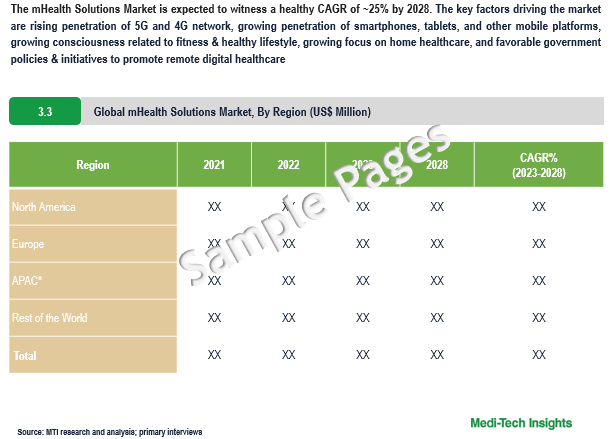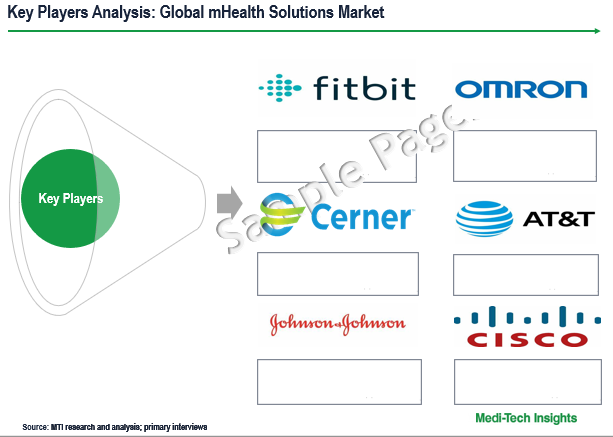
mHealth Solutions Market: Disrupting Traditional Healthcare Practices
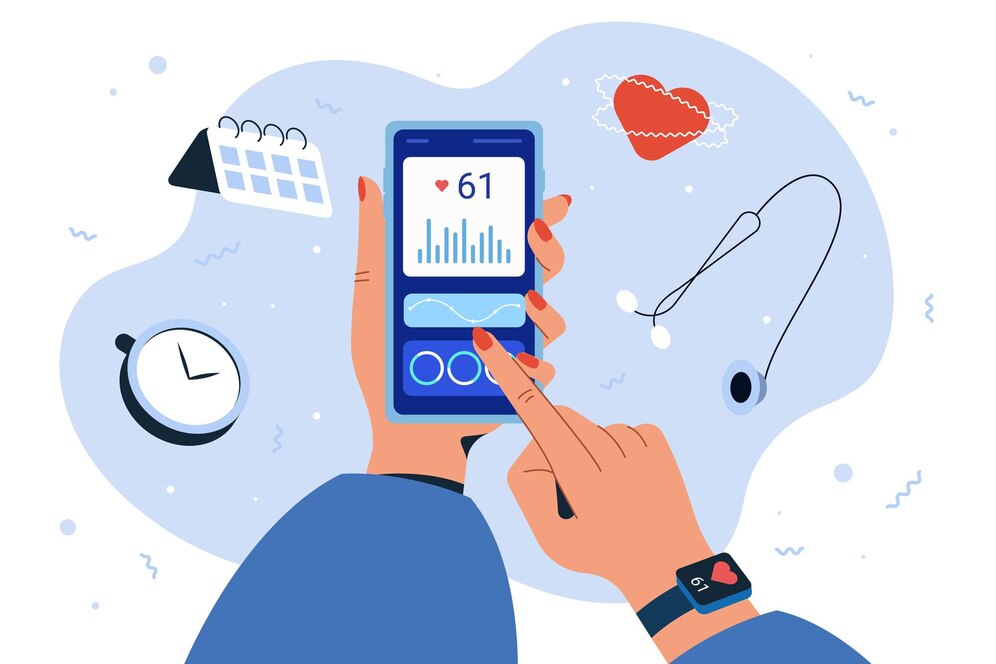
The mHealth Solutions Market is expected to witness a healthy CAGR of ~25% by 2028. The key factors driving the market are rising penetration of 5G and 4G network, growing penetration of smartphones, tablets, and other mobile platforms, a rising geriatric population, increasing incidence of chronic diseases, growing consciousness related to fitness & healthy lifestyle, growing focus on home healthcare, and favorable government policies & initiatives to promote remote digital healthcare. To learn more about the research report, fill out a quick inquiry for a sample report.
mHealth technology plays a vital role in digital health, specifically covering health information technology, wearables, telehealth, telemedicine, and personalized medicine.
Some of the practical applications of mHealth include:
- Remote Patient Monitoring (RPM): It allows patients to use mobile medical devices and technology to gather patient-generated health data (PGHD) and send it to healthcare professionals. Some of the key physiological data that can be collected with RPM programs include vital signs, weight, blood pressure, heart rate, among others
- Health Education: mHealth boosts literacy via apps like WebMD that provides reliable details on symptoms and treatments
- Disease Surveillance: Vital for real-time disease tracking, as seen in COVID-19 with apps like CO Exposure Notifications. The World Health Organization emphasizes mHealth's pivotal role in public health surveillance
- Medication Management: mHealth apps aid adherence, crucial for chronic illnesses. For instance – Medisafe is a medication engagement platform that empowers patients to seamlessly manage their treatment journey
- Mental Health Support: mHealth, exemplified by apps like Headspace and Talkspace, offers therapy and mindfulness. Studies affirm mobile apps' potential to enhance mental health service delivery
Increasing Adoption of 5G and 4G Networks Ensures Continuous Healthcare Services
mHealth technology adoption to a certain extent hinges on telecom advancements, notably the rise of high-speed connectivity like 3G, 4G, and broadband. With 5.2 billion subscribers in 2018, expected to reach 6.5 billion in 2021, 5G's integration in healthcare is driven by improved data transport for medical imagery, enhancing care quality and accessibility. 5G's low latency and high capacity enable widespread remote monitoring, augmented by AR and VR for innovative treatments. In North America, the extensive 5G/4G network penetration supports telemedicine via video calls and rapid data transfer, offering a superior customer experience compared to 4G. The evolution of Wi-Fi and connectivity technologies in the healthcare industry paves the way for increased penetration of connected medical devices, fostering growth opportunities in mHealth.
Smartphone, Tablets & Other Mobile Platforms Proliferation Fuels mHealth Market Growth Worldwide
The expansion of the mHealth market is being driven significantly by the increasing global penetration of smartphones, tablets, and other mobile platforms. A notable trend is the ownership of multiple smartphones, cell phones, or tablets by individuals. As per the GSMA’s annual State of Mobile Internet Connectivity Report 2023, over half (54%) of the global population (~4.3 billion people) now owns a smartphone. Notably, China and India are identified as regions with the highest concentration of mobile devices. The proliferation of smartphones is expected to empower the population by providing access to various healthcare services through wireless multimedia, thereby promoting the widespread adoption of mHealth services.
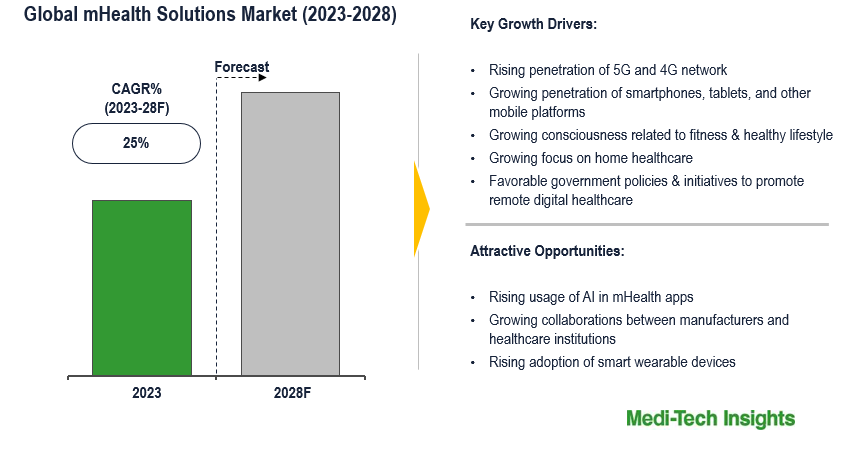
Fill out the "Quick Inquiry Form" to request a sample copy.
Competitive Landscape
Some of the key players operating in the market include Philips N.V (Netherlands), Medtronic plc (Ireland), Johnson & Johnson (US), OMRON Healthcare Co., Ltd. (Japan), Cerner Corporation (US), Apple, Inc. (US), AliveCor, Inc. (US), AirStrip Technologies (US), athenahealth, Inc. (US), iHealth Lab Inc. (US), iHealth Lab Inc. (US), AT&T Inc. (US), AgaMatrix, Inc. (US), Cisco Systems, Inc. (US), Fitbit Inc. (US), OSP Labs (US), SoftServe (US), Garmin, Ltd. (US), Dexcom, Inc. (US), Tunstall Heathcare (UK), Teladoc Health, Inc. (US), ZTE Corporation (China), and My mHealth Limited (UK) , among others.
Organic and Inorganic Growth Strategies Adopted by Players to Establish Their Foothold in the Market
Players operating in this market are adopting organic and inorganic growth strategies such as launching new services, acquiring related firms, and entering into collaborations to garner higher market share. For instance,
- In October of 2023, Cedars-Sinai launched the Cedars-Sinai Connect app, an innovative mobile health application driven by artificial intelligence. This app provides virtual healthcare solutions for a range of clinical concerns, allowing for same-day primary care appointments and 24/7 virtual access to medical experts for urgent medical needs
- In January 2023, Koninklijke Philips from the Netherlands collaborated with Masimo from the United States. The objective of this partnership was to enhance patient monitoring functionalities in home telehealth applications through the utilization of the Masimo W1 advanced health-tracking watch
- In January 2023, the U.S.-based company Garmin introduced the Instinct Crossover in India. This product incorporates Garmin's comprehensive range of wellness features, such as Sleep Score and Advanced Sleep Monitoring, along with health monitoring activities
The mHealth Solutions Market is expected to gain further momentum in the coming years due to the rising usage of AI in mHealth apps, growing collaborations between manufacturers and healthcare institutions, rising adoption of smart wearable devices, rising focus on patient-centric healthcare delivery, and aggressive organic and inorganic strategies followed by the players.
Key Strategic Questions Addressed
- What is the market size and forecast for the mHealth Solutions Market?
- What are the historical, present, and forecasted market shares and growth rates of various segments and sub-segments of the mHealth Solutions Market?
- What are the major growth drivers, restraints/challenges impacting the market?
- What are the opportunities prevailing in the market?
- What is the investment landscape?
- Which region has the highest share in the market? Which region is expected to witness the highest growth rate in the next 5 years?
- Who are the major players operating in the market? What is the competitive positioning of key players?
- Who are the new players entering the market?
- What are the key strategies adopted by players?
- Research Methodology
- Secondary Research
- Primary Research
- Market Estimation
- Market Forecasting
- Executive Summary
- Market Overview
- Market Dynamics
- Drivers
- Restraints
- Opportunities
- Industry Speaks
- Market Dynamics
- Global mHealth Solutions Market - Size & Forecast (2021 - 2028), By Product & Service
- Healthcare Apps
- Connected Medical devices
- mHealth Services
- Global mHealth Solutions Market - Size & Forecast (2021 - 2028), By End-user
- Providers
- Payors
- Patients
- Other End-users
- Global mHealth Solutions Market - Size & Forecast (2021 - 2028), By Region
- North America (U.S. & Canada)
- Europe (UK, Germany, France, Italy, Spain, Rest of Europe)
- Asia Pacific (China, India, Japan, Rest of Asia Pacific)
- Rest of the World (Latin America, Middle East & Africa)
- Competitive Landscape
- Key Players and their Competitive Positioning
- Competitive Positioning of Key Players (2022)
- Offerings Assessment, By Players
- Key Strategies Assessment, By Player (2021-2023)
- New Product and Service Launches
- Partnerships, Agreements, & Collaborations
- Mergers & Acquisitions
- Other Developments
- Key Players and their Competitive Positioning
- Key Companies Scanned (Indicative List)
- Philips N.V
- Medtronic plc
- Johnson & Johnson
- OMRON Healthcare Co., Ltd.
- Cerner Corporation
- Apple, Inc.
- AliveCor, Inc.
- AirStrip Technologies
- Athenahealth, Inc.
- iHealth Lab Inc.
- AT&T Inc.
- AgaMatrix, Inc.
- Cisco Systems, Inc
- Fitbit Inc.
- OSP Labs
- SoftServe
- Garmin, Ltd.
- Dexcom, Inc.
- Tunstall Healthcare
- Teladoc Health
- Other Prominent Players
The study has been compiled based on extensive primary and secondary research.
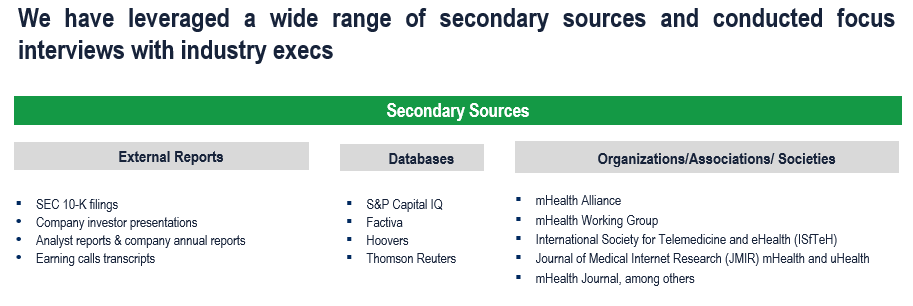
Primary Research
To validate research findings (market size & forecasts, market segmentation, market dynamics, competitive landscape, key industry trends, etc.), extensive primary interviews were conducted with both supply and demand-side stakeholders.
Supply Side Stakeholders:
- Senior Management Level: CEOs, Presidents, Vice-Presidents, Directors, Chief Technology Officers, Chief Commercial Officers
- Mid-Management Level: Product Managers, Sales Managers, Brand Managers, Business Development Managers, Consultants
Demand Side Stakeholders: Providers, Payors among others
Breakdown of Primary Interviews
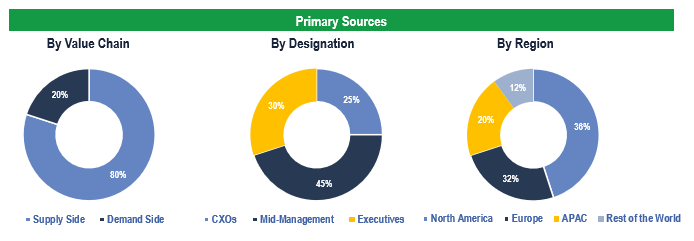
Market Size Estimation
Both ‘Top-Down and Bottom-Up Approaches’ were used to derive market size estimates and forecasts.
Data Triangulation
Research findings derived through secondary sources & and internal analysis were validated with Primary Interviews, Internal Knowledge Repository, and Company Sales Data.
